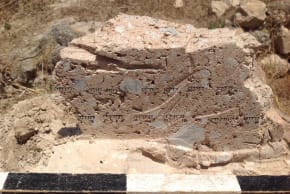Since 2017, a team of archaeologists from the IAA’s Prevention of Archaeological Theft unit has been systematically surveying the Judean Desert to reach valuable finds before the antiquity looters.
The figuring head is of the Roman god Mercury, a messenger god thought to be the equivalent of the Greek god Hermes.
The plant in question is Black henbane, whose seeds were found in a hollowed sheep or goat bone and was located in archeological sites throughout the Netherlands, according to the researchers.
Erez Abrahamov found the amulet, with a dung beetle image, on a hike in the Lower Galilee.
Dr. Robert Kool: “The rare find contributes information concerning the way trade was carried out."
The 100 foot structure was home to a number of shocking finds, giving insight into the history of a cult dating back to the 7th century.
The discovery was achieved by scientists from Tel Aviv University (TAU), the Hebrew University of Jerusalem (HU), Bar-Ilan University (BIU) in Ramat Gan, and Ariel University in Samaria.
The remains were thought to have been from between the second and fourth centuries.
The archeological discovery sheds light on the architecture built during the Xia dynasty, an early Chinese dynasty mentioned in legends.
Both of the Baltic nations contained rich centers of Jewish life and history before World War II.












